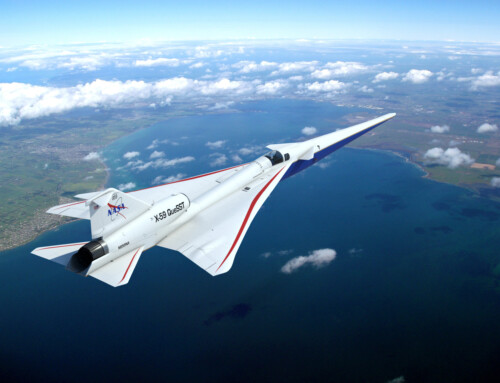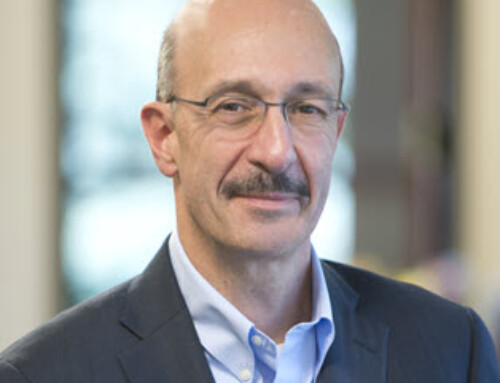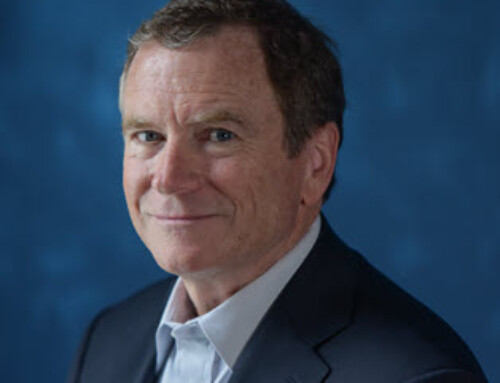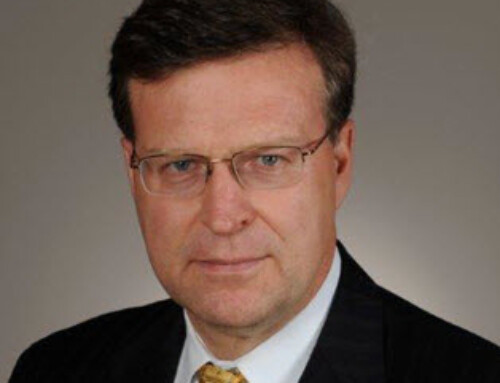 The first chapter of supersonic civilian flight ended 20 years ago when the Concorde took off for the last time from London Heathrow on its final final farewell flight, November 26, 2003. But that was just the end of the first chapter of high-speed air travel — high noise, high emissions & fuel inefficient (Mach 2.0, 1350mph, 2158kph). The next chapter of supersonic and hypersonic high-speed travel has been in the works for some time now, pushing towards the reintroduction of supersonic flight — low-boom, low-emissions and environmentally responsible. Progress demands we make improvements and move forwards to an even more amazing future.
The first chapter of supersonic civilian flight ended 20 years ago when the Concorde took off for the last time from London Heathrow on its final final farewell flight, November 26, 2003. But that was just the end of the first chapter of high-speed air travel — high noise, high emissions & fuel inefficient (Mach 2.0, 1350mph, 2158kph). The next chapter of supersonic and hypersonic high-speed travel has been in the works for some time now, pushing towards the reintroduction of supersonic flight — low-boom, low-emissions and environmentally responsible. Progress demands we make improvements and move forwards to an even more amazing future.
Since the dawn of time, humans have sought out faster, better, safer, cleaner and more efficient ways of traveling from “A” to “B”. From camels and horses to sailboats, then from steamships to railways and more recently from cars to planes, there has always been a need — a demand — to reach far-flung destinations for commerce, family & friendships, opportunities, power & politics, learning, exploration, romance, adventure and so much more.
We aren’t going to go backwards or be stuck forever at the same air speed we’ve been flying at for the past 60 years (Mach 0.85, 652mph, 1,050kph). Numerous ventures are promising a resurgence of supersonic, hypersonic and point-to-point/orbital travel – just the next chapter of air travel, not the final one (think “beam me up” and “warp drives”). They all envision a future where everyone can explore the world and eventually, the stars above.
Yes, environmental concerns, climate change, noise and equality issues all have to be addressed. We cannot advance technology to the detriment of the our communities, neighbors, wildlife and the planet. Those challenges, along with the usual engineering, finance, business, regulatory considerations are mere bumps in the road towards the future.
Vik Kachoria
President & CEO
Spike Aerospace, Inc.
A Brief Update on Supersonic and Hypersonic Flight Programs – 2023
My quick assessment of the “State of Supersonic Flight” as of the end of 2023. Please share your insights and help me fill in the gaps unintentionally created.
Supersonic Flight Programs
![]() Spike Aerospace has been very quiet over the past few years regarding our efforts to reintroduce supersonic flight. Rather than issue numerous press releases, we have been focused internally and on building the full business and engineering case for a next generation supersonic aircraft. One that is quiet, efficient and safe. Starting in early 2024, we will be a bit more public about our efforts and achievements.
Spike Aerospace has been very quiet over the past few years regarding our efforts to reintroduce supersonic flight. Rather than issue numerous press releases, we have been focused internally and on building the full business and engineering case for a next generation supersonic aircraft. One that is quiet, efficient and safe. Starting in early 2024, we will be a bit more public about our efforts and achievements.
CEO Max Kachoria has 40 years of experience including stints at NASA, GE, entrepreneurial ventures, investment banking and aerospace consulting and investing.
NASA X-59 QueSST NASA selected Lockheed Martin in 2016 to design and build a supersonic test aircraft that would demonstrate how its aerodynamic design would have a low-boom (soft thud) sound when flying overhead at supersonic speeds. NASA and the FAA want to determine the level and characteristics of sonic boom and how they impact communities.
The test aircraft, a single pilot (no passengers), single engine, Mach 1.4, limited range demonstrator was originally expected to fly in 2021 but, due to typical aircraft program delays, first flight was pushed to 2022. In October 2023, the first flight again had to be pushed back, this time to 2024 as NASA and LM ensure aircraft safety and integration. Just announced on Dec 11, 2023, NASA will unveil the X-59 publicly on January 12, 2024.
The supersonic community is looking forward to the first flight of the X-59 and the sonic boom data it will generate. NASA promises the design, data and research will be available to companies involved in supersonic development.
![]() Boom Supersonic appears to be making significant progress in 2023. The Boom XB-1 demonstrator was originally rolled out in Oct 2020 to much fan-fare with original test flights scheduled for 2021. Those test flights have been delayed and are now anticipated in 2024. The XB-1 aircraft was moved in 2023 from Colorado to the Mojave Air & Space Port where it has been undergoing ground testing and integration. Perhaps due to the typical aircraft program delays, flight testing is still a bit further out.
Boom Supersonic appears to be making significant progress in 2023. The Boom XB-1 demonstrator was originally rolled out in Oct 2020 to much fan-fare with original test flights scheduled for 2021. Those test flights have been delayed and are now anticipated in 2024. The XB-1 aircraft was moved in 2023 from Colorado to the Mojave Air & Space Port where it has been undergoing ground testing and integration. Perhaps due to the typical aircraft program delays, flight testing is still a bit further out.
The company has also been building out manufacturing facilities in Greenboro, NC. They have partnered with three companies to design, build and test a custom engine for their supersonic jet, the Overture.
Boom claims to have raised over $700m from mostly undisclosed angel investors and also recently from Saudi Arabia NEOM.
CEO Blake Scholl as a high school student built and sold a web hosting company before dropping out to attend Carnegie Mellon. He worked as a software engineer and manager at Amazon before management roles at two startups and Groupon.
![]() Exosonic plans to build a 70 passenger low-boom supersonic airliner. The company is also working on the EX-3 Trident UAV, a supersonic target drone for military applications. This summer it began ground testing a small scale unmanned drone test aircraft, the EX-3M Trident. They have raised $4m.
Exosonic plans to build a 70 passenger low-boom supersonic airliner. The company is also working on the EX-3 Trident UAV, a supersonic target drone for military applications. This summer it began ground testing a small scale unmanned drone test aircraft, the EX-3M Trident. They have raised $4m.
CEO Norris Tie worked as a propulsion at Lockheed Martin and elsewhere for 3 years before pursuing an MBA at Stanford University.
Hypersonic Flight Programs
 Venus Aerospace is developing a 12 passenger Mach 9 hypersonic aircraft (Stargazer) that will connect any destination in the world in under an hour. The aircraft will use a rotating detonation rocket engine when flying at 170,000 but will use conventional engines for take-off and landing. The company has raised $39m in funding from several well recognized and respected investor groups.
Venus Aerospace is developing a 12 passenger Mach 9 hypersonic aircraft (Stargazer) that will connect any destination in the world in under an hour. The aircraft will use a rotating detonation rocket engine when flying at 170,000 but will use conventional engines for take-off and landing. The company has raised $39m in funding from several well recognized and respected investor groups.
CEO Sassie Duggleby was in systems engineering and mission management at Virgin Orbit prior to launching Venus Aerospace. Prior to Virgin she worked in fiber optics, biotech and trailer manufacturing.
 Destinus, based in Canton Vaud Switzerland, is developing a hydrogen-powered hypersonic Mach 15 aircraft that will reach Australia from Europe in 90 minutes. They currently have a team of about 80 engineers spread across Europe. The company has raised $50m so far.
Destinus, based in Canton Vaud Switzerland, is developing a hydrogen-powered hypersonic Mach 15 aircraft that will reach Australia from Europe in 90 minutes. They currently have a team of about 80 engineers spread across Europe. The company has raised $50m so far.
CEO Mikhail Kokorich has founded several aerospace companies, including Momentus in Santa Clara. Momentus privately raised $143m and went public in 2021 but only after Kokorich was forced to resign Momentus due to pressure from the US DoD because of his Russian nationality.
![]() Hermeus has been making impressive progress towards a hypersonic aircraft. They have built a number of partnerships with Raytheon, Air Force and others. They have raised $176m so far and have several large military contracts.
Hermeus has been making impressive progress towards a hypersonic aircraft. They have built a number of partnerships with Raytheon, Air Force and others. They have raised $176m so far and have several large military contracts.
CEO AJ Piplica has a wealth of experience in hypersonic and aircraft design. Prior to Hermeus, AJ was CEO of Generation Orbit and a senior engineer at SpaceWorks.





